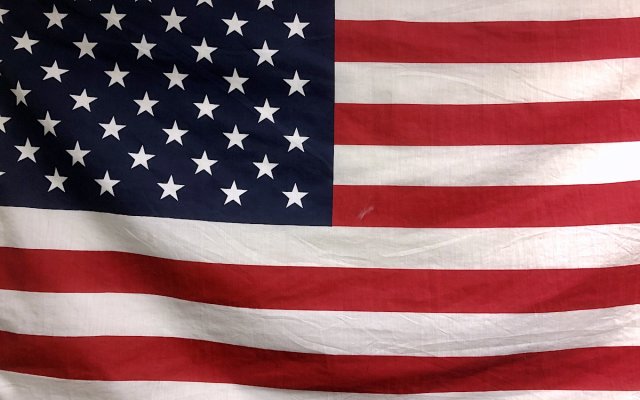
Last month, the University of Oklahoma‘s Undergraduate Student Congress passed a resolution ending the Pledge of Allegiance’s mandatory appearance on the agendas of its meetings. There was no requirement for the pledge in the organization’s bylaws, but some members objected to its recurring recitation because the flag represents — to them — a history of oppression of minorities.
Some OU alumni and other purportedly patriotic persons reacted with outrage, saying the gesture thumbed its nose at the very essence of America. But the assumption that national icons like the Pledge of Allegiance have always been permanent and unchanging suggests a certain ignorance of historical fact.
There have always been changes to patriotic lore, and details that people may think they know about certain sacred cows in American history are actually the result of numerous adjustments over the years. (The story of George Washington and the cherry tree stands as a prime example of embellished American folklore.)
The history of the Pledge of Allegiance
Originally published in the magazine Youth’s Companion in 1892, the statement read, “I pledge allegiance to my flag, and to the republic for which it stands, one nation, indivisible, with liberty and justice for all.” Some decades later, “my flag” was removed and “the flag of the United States of America” was substituted.
Then, in 1954, when those damn Russkie commies were at the gates, the words “under God” were inserted after “the republic, for which it stands, one nation ….”
Well, you can see the logic. Whose flag was “my flag”? World War I had aroused, in some quarters, questions about the patriotism of Americans of German descent. And let us not forget Oklahoma’s Green Corn Rebellion of 1917, a failed attempt by socialists to march on Washington and overthrow the federal government. “My flag” could mean almost anything. Can’t have that.
God’s part in the pledge’s history
As for the “under God” business, it was added by an act of Congress in 1954 in the middle of the Cold War, another example of the national tendency to drag God into the proceedings when things look dim for the U.S. of A.
“In God We Trust” was first stamped on American coinage in 1864, after three years of Civil War. It did not appear on every coin until the late 1930s after the Great Depression had played hell with the economy for several years. In 1956, President Dwight Eisenhower made it the nation’s official motto.
Oh, by the way, it was President Abraham Lincoln in 1864 who declared Thanksgiving would be a national holiday. Lincoln and Eisenhower, a couple of Republicans, did most of that stuff, huh? The G.O.P. was really something once upon a time.
But back to the flag. The one to which allegiance is pledged today is not the star-spangled banner of Francis Scott King’s poem. Set to the tune of To Anacreon in Heaven (an old English drinking song) and now our National Anthem, the poem contains in its fourth stanza the words, “In God is our trust.” The poem dates from 1814 and was first entitled The Defense of Fort McHenry, a reference to the War of 1812.
The thing became the National Anthem by an act of Congress in 1931 while the Great Depression was gathering steam.
‘A flag is a symbol’
So when it comes to God and country, Americans embrace flags, mottos and anthems as if those things had been around since time immemorial, even though history reveals that they were glomed onto by government whenever the republic needed a shot in the arm in a time of crisis.
There is no doubt that “our flag,” whatever its configuration at the time, accompanied discrimination against minorities. Native Americans were here first but occupied land white folks wanted, so they had to move, adapt to whites or die.
African Americans were brought as slaves to do work white folks didn’t want to do. After freedom came Jim Crow, segregation and concerted efforts to deny civil rights. Chinese were brought and exploited to help the equally exploited Irish build the transcontinental railroad. Etc, etc.
A flag is a symbol, and symbols mean different things to different people. In the United States, it is often a symbol of one thing to white people and of other things to other people.
But flags are also pieces of cloth. They may be of different shapes, rendered in different colors and variously decorated, yet they are still cloth.
Pledge allegiance to a piece of cloth, and you may find yourself fighting in defense of a golf course, which has 18 of them.
And you know who owns a lot of golf courses.





















